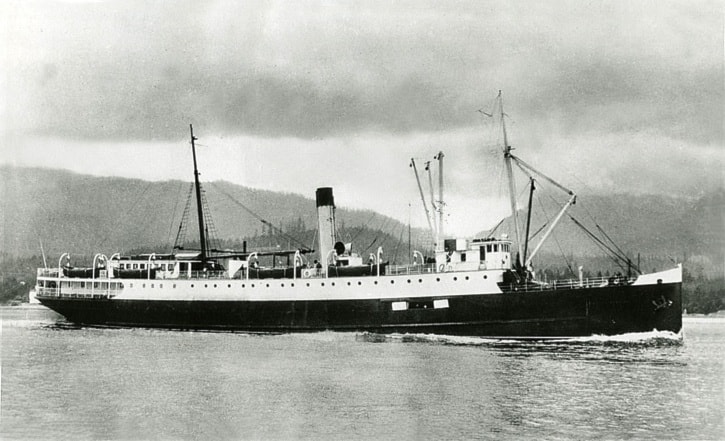My only memory of the Maquinna, the legendary “good ship Princess Maquinna” that served as a lifeline for Vancouver Island’s west coast, was in 1950, when I waved to friends on board as the vessel sailed from the CPR dock in Victoria. Engines throbbing, the ship set off in the darkness to serve the logging camps and canneries of the coast.
The ship sailed at 11 p.m., heading for Port Renfrew, the first of its many stops at small ports on its journey northward to Port Alice. Carrying passengers and cargo, the ship’s arrival at each stop brought out the villagers in greeting, as they looked forward to news from the outside world. Records tell us that the ship made three trips a month, and in the busier summer season, it’s workload was aided by the Princess Norah.
The ship was part of the Canadian Pacific Railway’s “Princess fleet,” pocket liners that provided many of the amenities of ocean liners but on a lesser scale. With their white linen tablecloths and gleaming silver, these steamships introduced just a touch of luxury to many whose lives were restricted to the limited comforts of camp life.
Captain Edward Gillam was master of the vessel for many years. His skill at navigating through dense fog, bringing the sturdy double-bottomed vessel safely through the gales of the storm-lashed shores, “the graveyard of the Pacific,” has earned him a special place in the annals of the west coast of Vancouver Island.
Named for the daughter of famous Chief Maquinna, the vessel was part of a fleet of more than a dozen Princess liners. Built in 1913 at BC Marine Railway Company’s yard in Esquimalt (later to become Yarrows Ltd.) the vessel brought a welcome beacon to the west coast until 1952. By that time logging roads and rail connections had networked access to remote villages on the island, reducing the need for marine routes.
Among those onboard to enjoy the last sailing of the Maquinna were Fred and Elsie Thornber, a Sooke business family. Jim and Elsie Arden, who were running a logging outfit based at the settlement of Nahmint, recall waving to them as the ship sailed by. As a glorious part of our island history ended, it is a bit sad to note that the good ship was converted in 1953 to serve as the barge Taku.
Elida Peers,
Historian
Sooke Region Museum
